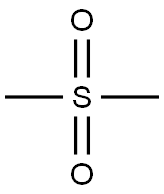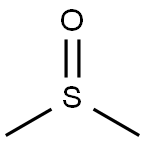Diprophylline
Synonym(s):Dyphylline;Diprophylline;7-(2,3-Dihydroxypropyl)theophylline;9-(1,3-Benzodioxol-5-yl)-4-hydroxy-6,7-dimethoxy-naphtho[2,3-c]furan-1(3H)-one;7-(2,3-Dihydroxypropyl)-3,7-dihydro-1,3-dimethyl-1H-purine-2,6-dione
- CAS NO.:479-18-5
- Empirical Formula: C10H14N4O4
- Molecular Weight: 254.24
- MDL number: MFCD00005759
- EINECS: 207-526-1
- SAFETY DATA SHEET (SDS)
- Update Date: 2025-12-25 11:31:46

What is Diprophylline?
Toxicity
LD50=1954 mg/kg (orally in mice)
Description
Dyphylline is the N-7 dihydroxypropyl derivative of theophylline and is not a theophylline salt. Dyphylline does not get metabolized to theophylline in vivo, and even though it contains 70% theophylline by molecular weight ratio, the equivalent amount to theophylline is not known. Dosing must be accomplished independently by monitoring dyphylline blood levels. Dyphylline has a diminished bronchodilator effect compared to theophylline, but it may have lower and less serious side effects. Dosage forms available are an elixir and tablets.
Description
Dyphylline is a xanthine derivative that acts as an A1 and A2 adenosine receptor antagonist and phosphodiesterase inhibitor and exhibits bronchodilator and vasodilator effects. It also moderately inhibits microsomal prostaglandin E synthase-1 with an IC50 value of 200 μM and downregulates ABCG2 drug transporter expression in multidrug resistant tumor cells.
Chemical properties
white to light yellow crystal powder
Originator
Neothylline,Lemmon,US,1948
The Uses of Diprophylline
PDE inhibitor, bronchodilator, vasodilator
The Uses of Diprophylline
An adenosine receptor antagonist, phosphodiesterase inhibitor and vasodilator
Indications
For relief of acute bronchial asthma and for reversible bronchospasm associated with chronic bronchitis and emphysema.
Background
Dyphylline is a theophylline derivative with broncho- and vasodilator properties. It is typically used in the management of asthma, cardiac dyspnea, and bronchitis.
What are the applications of Application
Diphylline is an inhibitor of phosphodiesterase
Definition
ChEBI: An oxopurine that is theophylline bearing a 2,3-dihydroxypropyl group at the 7 position. It has broncho- and vasodilator properties, and is used in the treatment of asthma, cardiac dyspnea, and bronchitis. It is also an ingredient in preparations that have been promoted for coughs.
Manufacturing Process
180 grams of theophylline is dissolved in 500 cc of boiling water. To this
solution is added 40 grams of sodium hydroxide or 56 grams of potassium
hydroxide slowly and with constant stirring.
When solution is complete, 120 grams of 1-chloro-2,3-dihydroxypropane is
slowly added. The thus provided mixture is brought to boiling and heating is
continued until a temperature of 110°C is reached.
The resultant liquid is evaporated under reduced pressure to remove all traces
of water. The resulting syrupy liquid is allowed to stand with occasional
stirring until crystallization takes place. The compound is purified by
recrystallization from alcohol. The product melts at 155°-157°C.
brand name
Dilor (Savage); Lufyllin (Medpointe); Neothylline (Teva).
Therapeutic Function
Smooth muscle relaxant
Biochem/physiol Actions
7-(2,3-Dihydroxypropyl)theophylline is also called as dyphylline. Dyphylline serves as a bronchodilator and aids in better air flow through the lungs. It reduces the symptoms of chronic lung disorder such as asthma and bronchitis.
Pharmacokinetics
Dyphylline, a xanthine derivative, is a bronchodilator used for relief of acute bronchial asthma and for reversible bronchospasm associated with chronic bronchitis and emphysema. Dyphylline is a xanthine derivative with pharmacologic actions similar to theophylline and other members of this class of drugs. Its primary action is that of bronchodilation, but it also exhibits peripheral vasodilatory and other smooth muscle relaxant activity to a lesser degree.
Metabolism
Hepatic
Properties of Diprophylline
| Melting point: | 161-162 °C(lit.) |
| Boiling point: | 397.46°C (rough estimate) |
| Density | 1.3036 (rough estimate) |
| refractive index | 1.6200 (estimate) |
| storage temp. | Keep in dark place,Inert atmosphere,Room temperature |
| solubility | Freely soluble in water, slightly soluble in ethanol (96 per cent). |
| form | Powder |
| pka | 13.74±0.20(Predicted) |
| color | White |
| Water Solubility | 33 g/100 mL (25 ºC) |
| Merck | 14,3479 |
| BRN | 284563 |
| Stability: | Hygroscopic |
| CAS DataBase Reference | 479-18-5(CAS DataBase Reference) |
| NIST Chemistry Reference | Dyphylline(479-18-5) |
| EPA Substance Registry System | Dyphylline (479-18-5) |
Safety information for Diprophylline
| Signal word | Warning |
| Pictogram(s) |
 Exclamation Mark Irritant GHS07 |
| GHS Hazard Statements |
H302:Acute toxicity,oral |
Computed Descriptors for Diprophylline
New Products
Indole Methyl Resin tert-butyl 9-methoxy-3-azaspiro[5.5]undecane-3-carboxylate Boc-His(Boc)-OH 2-CTC Resin 4-Chloro-7-tosy1-7Hpyrrolo[2,3-d]pyrimidine 5,7-Dibromo-1H-indole 2,5-dichloro-N-hydroxy-4,6-dimethylpyridine-3-carboximidamide 2,2-Dimethoxy-7-azaspiro[3.5]nonane hydrochloride 4-chloromethyl-5-methyl-1,3-dioxol-2-one (DMDO-Cl) R-2-BENZYLOXY PROPIONIC ACID 1,1’-CARBONYLDIIMIDAZOLE 1,1’-CARBONYLDI (1,2-4 TRIAZOLE) N-METHYL INDAZOLE-3-CARBOXYLIC ACID 4-((2-hydroxyethyl)thio)benzoic acid 1-(TERT-BUTOXYCARBONYL)-2-PYRROLIDINONE Methyl 6-methylnicotinate 3-Pyridineacrylic acid tert-Butyl carbazate TETRAHYDRO-2H-PYRAN-3-OL 2-((4-morpholinophenylamino) (methylthio) methylene) malononitrile 3-(4-morpholinophenylamino)-5-amino-1H-pyrazole-4-carbonitrile 2,4-dihydroxybenzaldehyde 1,3-Diethyl-1,3-Diphenylurea Methyl 2-methylquinoline-6-carboxylateRelated products of tetrahydrofuran








You may like
-
 479-18-5 Dyphylline 99%View Details
479-18-5 Dyphylline 99%View Details
479-18-5 -
 479-18-5 99%View Details
479-18-5 99%View Details
479-18-5 -
 Diprophylline 98% CAS 479-18-5View Details
Diprophylline 98% CAS 479-18-5View Details
479-18-5 -
 Pyridine 99.5% HPLC /UV SpectroscopyView Details
Pyridine 99.5% HPLC /UV SpectroscopyView Details
110-86-1 -
 Piperazine Spot supply, best priceView Details
Piperazine Spot supply, best priceView Details
110-85-0 -
 Dibutyl PhthalateView Details
Dibutyl PhthalateView Details
84-74-2 -
 Imidazole Spot supply, competitive priceView Details
Imidazole Spot supply, competitive priceView Details
288-32-4 -
 Thiourea 99% ARView Details
Thiourea 99% ARView Details
62-56-6
